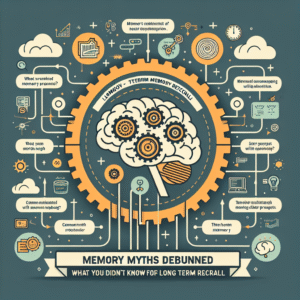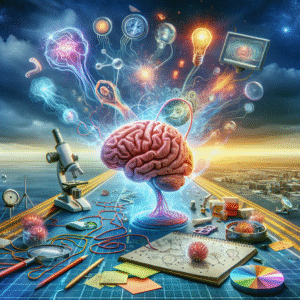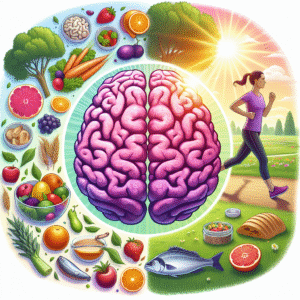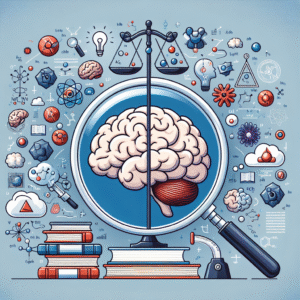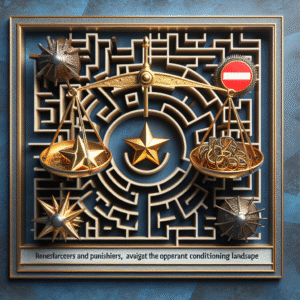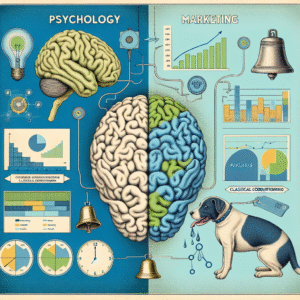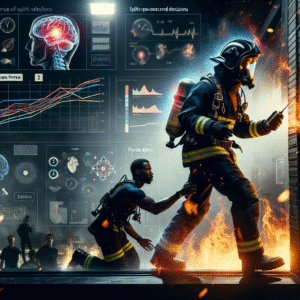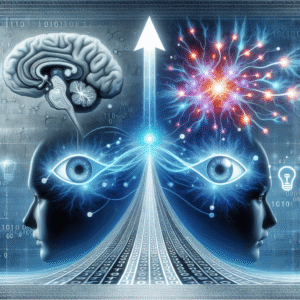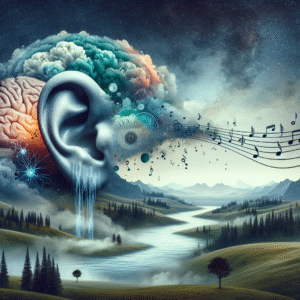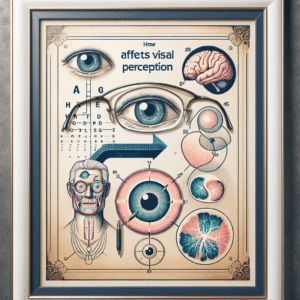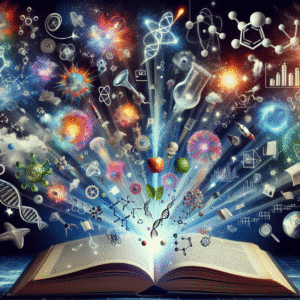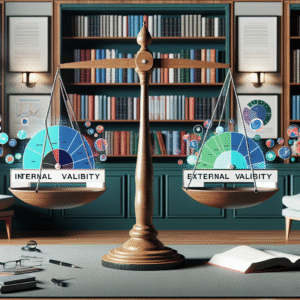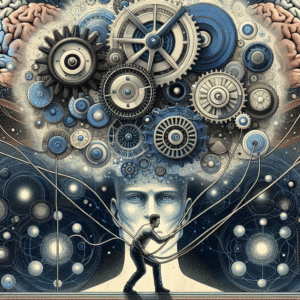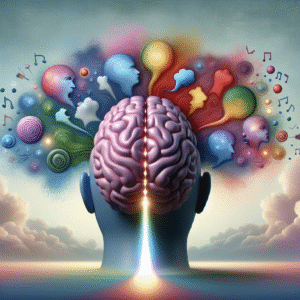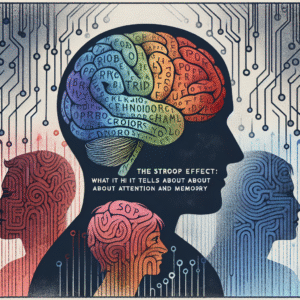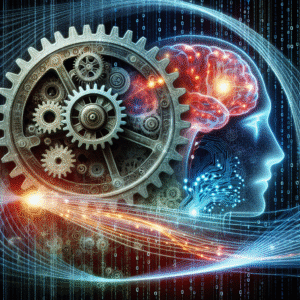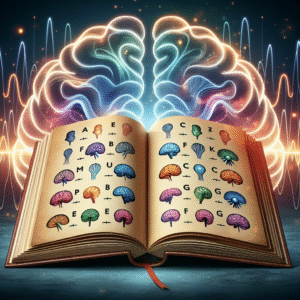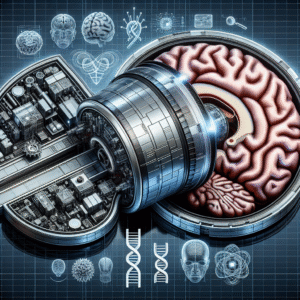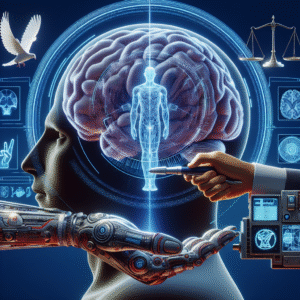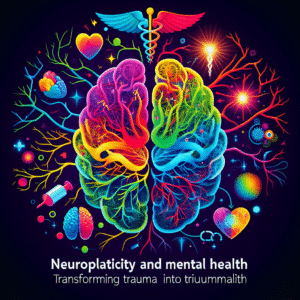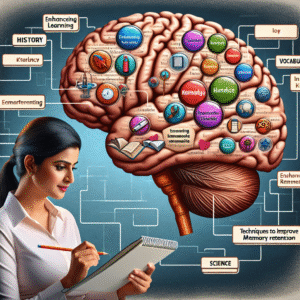Introduction In our fast-paced world, memory is a priceless asset that can shape our personal and professional lives. Yet, despite its importance, many misconceptions surround the concept of memory, especially long-term recall. Have you ever heard that we only use 10% of our brains or that memory declines with age in an irreversible manner? What if I told you...
Problem Solving
Introduction Imagine walking into a room, and instantly forgetting why you came in. For many, this momentary lapse is a common annoyance, but it highlights an essential function of our cognitive architecture: short-term memory. The neuroscience of short-term memory plays a critical role in our daily lives. Understanding this fleeting mental capacity can illuminate how we learn, interact, and...
Introduction In a fast-paced world where multitasking and mental agility are prized, maintaining a healthy working memory is more crucial than ever. Working memory—the cognitive system that temporarily holds and manipulates information—underpins our ability to learn, reason, and make decisions. However, did you know that diet and lifestyle choices play a pivotal role in shaping this cognitive function? This...
Introduction Have you ever wondered why people often make choices that defy logic? Why do we sometimes choose the most expensive item under the assumption it is the best? Why do we stick with a failing plan simply because we’ve invested so much time and resources into it? Welcome to the fascinating world of decision-making, where human behavior and...
Introduction What if every setback you faced was not a roadblock, but a stepping stone to greater success? In today’s fast-paced world, setbacks are inevitable. Whether they’re personal, professional, or emotional, they come in many forms — from job losses to project failures. But as the age-old saying goes, “What doesn’t kill you makes you stronger.” This article explores...
Introduction In a world overflowing with data and intricate choices, the ability to make sound decisions has never been more crucial. But what if the secret to superior decision-making lies not just in analytical thinking but also in understanding emotions—both your own and those of others? This is where emotional intelligence (EI) comes into play, a concept that has...
Introduction Imagine waking up every day, energized to tackle your goals. You exercise regularly, eat healthily, and feel productive at work. What if I told you that the secret to maintaining these positive behaviors lies in understanding and applying reinforcement schedules? In a world saturated with fleeting trends and quick-fix solutions, reinforcement schedules offer a sustainable pathway to lasting...
Introduction: The Power of Behavior Modification In an ever-evolving world where understanding human behavior can unlock doors to unprecedented success, the study of operant conditioning stands out as a beacon of knowledge. Reinforcers and punishers: navigating the operant conditioning landscape can provide insights that transform our interactions, influence learning, and enhance productivity. Whether you’re a teacher aiming to inspire...
Introduction Have you ever experienced a sudden urge to buy a specific brand of soda just because you heard its jingle? This instinctual reaction isn’t mere coincidence; it’s a brilliant application of classical conditioning at play. Classical conditioning, a term coined by Ivan Pavlov, demonstrates how certain stimuli can evoke predictable responses. This principle, deeply rooted in psychology, has...
Introduction In today’s fiercely competitive market, businesses are constantly seeking innovative ways to capture consumer attention and drive conversions. One potent strategy that has stood the test of time is harnessing the power of stimulus-response in marketing and advertising. By understanding how consumers respond to various stimuli, brands can craft compelling messages that resonate deeply with their target audience....
Introduction In an age where the difference between triumph and disaster often comes down to mere moments, understanding The Science of Split-Second Decisions: Reaction Time in High-Stakes Situations has never been more critical. Whether it’s a police officer responding to a sudden threat, a pilot navigating turbulence, or an athlete racing towards victory, the capacity to make instant decisions...
Introduction In an era defined by rapid advancements in artificial intelligence (AI), understanding the underlying principles that enable machines to ‘pay attention’ has become crucial. Attention mechanisms, first inspired by human cognition, are revolutionizing how we develop AI models, particularly in natural language processing and computer vision. This article, A Deeper Look at Attention Mechanisms: Bridging Neuroscience and AI,...
Introduction Imagine walking through a bustling market, where the sounds of haggling vendors blend with laughter, the distant strum of a guitar, and the whirling of bicycles. This auditory milieu creates a unique soundscape, one that not only enriches our experience but also haunts our memories long after we leave. Soundscapes of the Mind: How Auditory Perception Influences Memory...
Introduction Have you ever noticed how your vision seems to change over time? Perhaps you’ve experienced difficulty reading fine print or found it harder to focus in dim light. Knowing that changes in our vision can be linked to the natural passage of time sheds light on a fundamental aspect of aging: How Age Affects Visual Perception: What You...
Introduction In an age where information is at our fingertips, the ability to recall memories and information has become both easier and more challenging. Today’s digital landscape, with its myriad of apps, platforms, and tools, offers a unique paradox in memory retrieval: while we have access to almost infinite knowledge, our ability to remember essential details can sometimes feel...
Introduction Have you ever walked into a familiar place and been instantly transported back to a specific moment in time? Perhaps a childhood home, a favorite café, or even a nostalgic song igniting memories of a past relationship? Our feelings have a profound ability to shape our memories, enhancing or inhibiting how we encode the details of our experiences....
Introduction In an era marked by rapid technological advancement and shifting job markets, the significance of effective learning strategies has never been more vital. Traditional education often falls short in preparing individuals for real-world challenges, making the exploration of learning theories beyond the classroom not just valuable but essential. “Beyond the Classroom: Real-World Applications of Learning Theory” goes beyond...
Introduction Imagine waking up on a sunny morning, filled with optimism about the day ahead. Now, contrast that with a dreary day when you faced unexpected challenges. How did these emotional states shape your thoughts, decisions, and actions? The intricate connection between emotions and cognition illuminates the pathway to understanding human behavior and decision-making. Knowing Emotions and Cognition: How...
Introduction Imagine a world where scientific breakthroughs are not confined to the walls of prestigious laboratories or locked behind paywalls. Instead, knowledge flows freely like a river, nurturing ideas, innovation, and collaboration. This isn’t just a dream—it’s the essence of The Future is Open: How Open Science Will Shape Tomorrow’s Innovations. The open science movement presents a transformative vision...
Introduction In an era marked by rapid scientific advancements and a deluge of information, the concept of scientific rigor has never been more critical. It is foundational to ensuring that research findings are reliable and applicable in real-world settings. However, recent years have presented a challenge: numerous high-profile studies have failed to replicate, leading researchers, policymakers, and the public...
Introduction In an era dominated by technology, the phrase Ethics in the Digital Age: Reevaluating Guidelines in a Tech-Driven World has become a mantra for policymakers, technologists, and everyday users alike. As digital platforms permeate every aspect of our lives, from social interactions to enterprise operations, the ethical implications of these technologies must not only be recognized but actively...
Introduction In the ever-evolving world of research, the concept of external validity often stands as a gatekeeper between the lab and the real world. Imagine if the findings of groundbreaking studies never found their way into our daily lives. That’s a risk we take when external validity is overlooked. “Making Sense of External Validity: A Guide for Researchers” is...
Introduction In the realm of research and experimentation, two concepts often emerge as pivotal in determining the robustness of findings: internal validity and external validity. Understanding these two types of validity is crucial for researchers, as they form the bedrock of credible and reliable research. If you’ve ever wondered why some studies can be trusted to predict real-world outcomes...
Introduction Imagine you’re a researcher on the brink of discovering a groundbreaking treatment, but instinctively you wonder: have I tested enough samples to make my findings robust? The question of sample size is not just a footnote in the research process; it’s the very foundation upon which credible conclusions rest. Welcome to "The Importance of Sample Size in Hypothesis...
Statistical significance is a cornerstone of modern research and decision-making across various fields—from medicine to marketing. Often misunderstood or misrepresented, the journey from hypothesis to validation involves careful planning, rigorous analysis, and thoughtful interpretation. In this guide, we will explore the intricate mechanics behind statistical significance, illustrate its real-world applications through compelling case studies, and culminate our journey with...
Introduction: The Power of Visual Communication In today’s fast-paced world, the ability to communicate effectively is paramount. Among the myriad of tools available for sharing information, visual data presentation stands out as a powerful method of conveying complex messages quickly and clearly. From infographics to interactive dashboards, visualizing data not only enhances comprehension but can also inspire action, driving...
Introduction Imagine a world where your thoughts and beliefs can significantly influence your health. This is not merely a fantasy; it’s the powerful phenomenon known as the placebo effect. As we delve into the realms of psychological and physiological connections, we uncover how the mind can act as a formidable ally in our healing processes. This exploration of Harnessing...
Introduction Imagine a world where scientists could effortlessly discern whether a new therapy works or if it’s simply a placebo effect. This reality hinges on one crucial element: control groups. In the realm of psychological research, control groups are not just standard practice; they are essential in determining cause-and-effect relationships. This article offers an in-depth exploration of control groups...
Introduction In today’s data-driven world, the importance of effective participant sampling cannot be overstated. Organizations across various sectors, from healthcare to marketing, rely heavily on sampling techniques to gather meaningful data and make informed decisions. Understanding real-world applications of participant sampling is not just academic; it’s essential for anyone looking to leverage insights that could significantly impact their strategic...
Introduction In today’s fast-paced marketing landscape, the value of precise consumer insights cannot be overstated. Businesses are constantly seeking better ways to understand and predict consumer behavior. Enter random assignment—a powerful tool that can fundamentally alter how we conduct marketing research. But what exactly is random assignment, and how does it transform marketing research and consumer insights? This guide...
Introduction In a world brimming with data, the power of experimentation has never been more crucial. Whether you’re a researcher, business analyst, or simply a curious mind, understanding the Statistical Foundations: Designing Experiments for Reliable Results is essential. Experiments allow us to test hypotheses, draw conclusions, and ultimately make informed decisions based on tangible evidence. In a landscape...
Introduction In the high-stakes world of sports, where every millisecond counts and every competitive edge is treasured, the effectiveness of an athlete often hinges on a deceptively simple skill: observation. The Art of Observation: Eye Tracking in Sports Performance Analysis is making waves as a powerful tool for coaches and athletes alike. Traditional methods of performance analysis are evolving,...
Introduction Imagine being able to ‘listen in’ on the brain’s internal conversations, deciphering the subtle dialogues that occur during thought processes, emotions, or sensory experiences. The future of neuroscience is not just a realm of possibility; it’s a frontier where Event Related Potentials (ERPs) are revolutionizing how we understand the human mind. This article delves into the transformative potential...
Introduction In today’s fast-paced world, stress, anxiety, and other mental health concerns are at an all-time high. The need to understand mental health goes beyond traditional methods; it requires exploring the intricate relationships between our mind and body. This article aims to delve deep into the fascinating topic of "Sensitization and Mental Health: Exploring the Mind-Body Connection," highlighting how...
Introduction Imagine walking into a room filled with vibrant colors, enticing scents, and lively music. Initially, you might feel exhilaration or excitement. But after a while, these sensations fade, becoming mere background noise. This phenomenon, known as habituation, plays a pivotal role in shaping our emotional responses to daily stimuli. Understanding the impact of habituation on emotional responses is...
Introduction In today’s fast-paced world, where distractions are omnipresent, focusing the mind is more critical than ever. With constant notifications, multitasking, and a barrage of information, the ability to concentrate has become a rare skill. Divided attention hampers productivity, dilutes our creativity, and can even affect our mental well-being. Thus, understanding Focusing the Mind: Strategies to Combat Divided Attention...
In our fast-paced, hyper-connected world, the relentless onslaught of information can feel overwhelming. Each day, we’re bombarded with notifications, updates, emails, and articles that compete for our attention. Navigating the Information Overload: The Role of Selective Attention has never been more crucial. This article dives deep into how we can harness selective attention as a powerful tool to manage...
Introduction Imagine walking through a bustling city street, vibrant with colors, sounds, and motion. Your attention flickers between the flashing lights of a storefront, the chatter of passersby, and the distant sound of an approaching siren. This incredible capacity to focus on specific stimuli, while filtering out distractions, is a remarkable human ability known as visual attention. In this...
Introduction Imagine you’re at a bustling airport, surrounded by bright signs screaming in various colors. Above all the chaos, you need to read a sign that says "RED," but it’s printed in green. How easy do you think that is? The moment you pause to think, you’re experiencing what psychologists call the Stroop Effect. This phenomenon reveals a great...
Introduction Imagine walking into a café, the aroma of freshly brewed coffee wafting through the air, soothing jazz playing in the background. You glance at the menu and find yourself drawn to a specific pastry you’ve never considered before. Was it the music, the ambiance, or perhaps a subtle cue in the environment influencing your choice? From Subliminal Messages...
Introduction In an age where information is abundant yet attention spans are fleeting, the ability to learn effectively has never been more crucial. Strategies for Success: Implementing Explicit Learning Techniques are essential for anyone eager to harness their learning potential. These techniques not only improve retention but also enhance comprehension, making learning both efficient and enjoyable. Whether you are...
Introduction Imagine a child picking up a new language without formal lessons, or an adult mastering a complex skill through trial and error rather than structured practice. These scenarios tap into the profound and often unnoticed world of implicit learning. This fascinating cognitive process underpins much of human behavior, influencing how we absorb information and acquire skills without explicit...
Introduction: The Power of Perception in Our Choices In an increasingly interconnected world, the way we perceive others can drastically shape our decision-making processes. The phenomenon of bias, often unconscious, has the power to influence choices in our personal lives, workplaces, and societies. As we delve into "Breaking Down Bias: How Social Cognition Impacts Decision-Making," we will explore the...
Introduction Have you ever wondered why some individuals bounce back from adversity more swiftly than others? What hidden mechanisms enable certain people to maintain their mental health and positivity even in the face of life’s challenges? The answer may lie in what is known as emotional processing. In this article, we will delve into The Role of Emotional Processing...
Introduction Fear is a primal emotion that resonates deep within our DNA. It shapes the way we interact with the world, influences our decisions, and even dictates our survival. But have you ever stopped to wonder why we fear? What’s behind that instinctive reaction we feel when confronted with danger? The answer lies in the fascinating study of The...
Introduction Stress is an omnipresent facet of modern life, often viewed as a foe that must be defeated. Yet, what if we could approach it differently—transforming it into a powerful ally? In our quest for understanding, we find ourselves at the intersection of behavioral neuroscience and everyday experiences, revealing profound insights. Unlocking the Secrets of Stress: Behavioral Neuroscience Perspectives...
Introduction Have you ever stopped to consider how age influences the way we perceive speech? This question is not merely academic; it resonates deeply across various fields such as psychology, linguistics, and audiology. As we age, our cognitive processes, sensory abilities, and life experiences shape how we interpret sounds and speech. The impact of age on speech perception is...
Introduction In an era defined by rapid technological advancement, the intersection of technology and language acquisition has never been more pronounced. The significance of The Impact of Technology on Language Acquisition in the Digital Age cannot be overstated; it influences how we learn, teach, and engage with languages across the globe. As more people turn to digital platforms for...
Introduction Picture this: you’re at a bustling cafe, your eyes darting around, taking in the sights and sounds. Suddenly, a friend waves at you from across the room. Without thinking, your body springs into action—your brain coordinates your movements, and you’re out of your chair and waving back. This stunning interplay between perception, motor skills, and cognitive processing underscores...
Introduction: Unlocking Potential through the Power of the Mind Imagine an aspiring athlete who visualizes themselves executing a flawless routine before stepping onto the field. Every movement is precise, every breath is measured, and success radiates from their very being. This scenario epitomizes the transformative nature of visualization in motor skill acquisition—a tool that transcends mere imagination to enhance...
Introduction In a world saturated with visual stimuli, the art of design has transformed from mere aesthetics to a powerful communication tool. This shift emphasizes the importance of creating designs that resonate with users on a deeper level. By exploring designing with intention, particularly through the lens of Gestalt principles, designers can create experiences that are not only beautiful...
Introduction: The Intriguing World of Perceptual Illusions Imagine walking through an art gallery, only to find a painting that seems to shimmer and shift as you move. Or consider watching a magician meticulously craft a trick that leaves you questioning the nature of reality itself. This is the enchanting realm of perceptual illusions, where our senses betray us, revealing...
Introduction In our fast-paced, hyper-stimulating world, creating environments that cater to sensory needs has never been more crucial. For individuals with sensory sensitivities—such as those on the autism spectrum, individuals with ADHD, or anyone simply seeking a calm oasis from daily stress—a sensory-friendly space can transform their well-being. Creating Sensory-Friendly Spaces: Design Tips for Home and Work delves into...
Introduction Imagine navigating the world through a lens that alters how you experience everything—from the vivid splashes of color in a sunset to the music flowing through your headphones. This lens is not just an artistic tool; it’s the concept of perception that shapes our interactions with technology. In the burgeoning realm of tech, the importance of understanding perception...
Introduction Ever wondered what your brain is up to while you go about your daily activities? The brain is constantly buzzing with electrical activity, and understanding this phenomenon is not only fascinating but also essential for advancements in medicine and neuroscience. In this article, we’ll explore The ABCs of EEG: Understanding Brain Waves and Their Significance, diving into how...
Introduction Have you ever wondered what goes on inside the human brain when we think, feel, and interact? The concept of "Decoding Brain Activity: The Science Behind Functional MRI" holds the key to unveiling those mysteries, providing insight into the complexities of our thoughts and emotions. Functional Magnetic Resonance Imaging (fMRI) serves as one of the most revolutionary tools...
Introduction Imagine a world where doctors can see what’s happening inside your brain in real-time, potentially detecting mental disorders before symptoms even develop. The future of brain imaging looks promising, with revolutionary technologies on the horizon, from advanced MRI techniques to artificial intelligence algorithms that may change how we understand the human brain. These innovations not only foster incredible...
Introduction Imagine the vast potential of a mind that can adapt, heal, and transform itself over time. Neuroplasticity, a groundbreaking principle of neuroscience, reveals that our brains are not static entities but are remarkably flexible. This incredible capability not only influences our cognitive abilities but also plays a pivotal role in mental health. By embracing the concept of Neuroplasticity...
Introduction Imagine sitting in a lecture, absorbing information like a sponge, only to question everything you learned during your next exam. This scenario highlights a pressing concern in education and self-learning: memory retention. With a world overflowing with information, knowing how to retain knowledge effectively is crucial. In this comprehensive guide, "Enhancing Learning: Techniques to Improve Semantic Memory Retention,"...
Introduction Imagine waking up in a world where cherished memories have faded into oblivion, where the very essence of who you are slips through your fingers like sand. This is the poignant reality faced by millions dealing with amnesia and memory loss. The question that haunts them and their loved ones is, What Happens When Episodic Memory Fails? Understanding...
